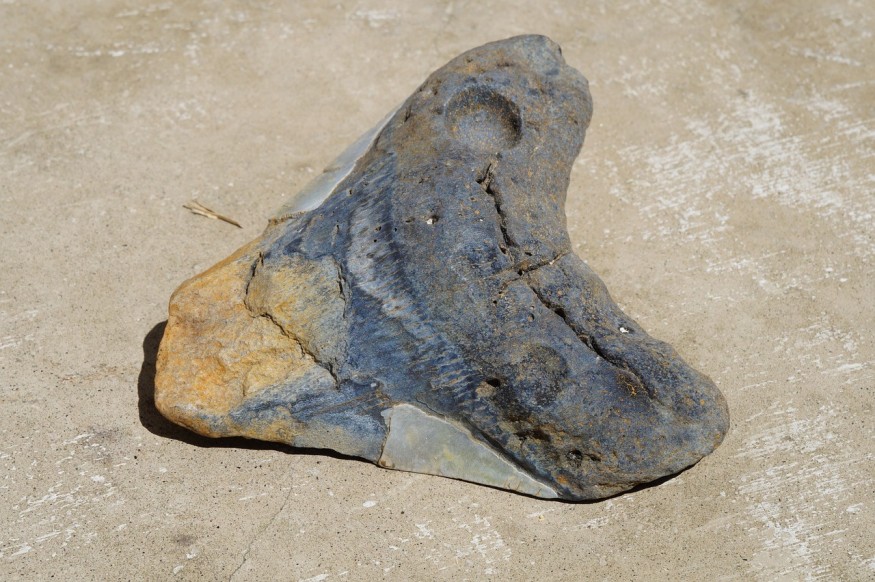A megalodon ancestor tooth was reportedly found by fossil hunters Rachel Shill Cook and her step-daughter, Addison Shill, while hiking to hunt for crystals along the Nechako River in British Columbia, Canada, on April 11.
Cook uploaded photos of the rare fossil tooth on social media, receiving multiple contacts from people saying she found a megalodon tooth but rather from its long-extinct ancestor.
Megalodon is one of the largest and most fearsome ocean predators that swam the Earth's oceans millions of years ago.
With its fossil tooth being the only evidence of its existence, scientists estimate that the big tooth shark megalodon (Otodus megalodon) can grow up to around 59 feet (18 meters), even surpassing some of the largest sharks known today.
However, other oceanic predators preceded the megalodon shark even after the extinction of all non-avian dinosaurs 66 million years ago.
One such create is none other than the cousin and ancestor of the megalodon: Otodus obliquus, which lived approximately 55 million years ago.
Although shorter than its descendant, the megalodon's predecessor was thought to reach lengths of up to 33 feet (10 meters).
Megalodon Ancestor Tooth

Cook told Newsweek the area was new to them so they were taking their time to look at the ground, describing the fossil resembled a shark's tooth but was confused since it was quite large, around half the size of her palm.
The fossil hunter shared photos of her discovery on Facebook and posted them to The Fossil Forum on April 16.
It was only afterwards when she realized what she discovered was not an ordinary find, due also to its location in the Northern Hemisphere, which deviates from previous findings of other megalodon ancestor tooth.
Rare Fossil Tooth
Teeth from O. obliquus are commonly found in Morocco, which left some social media users baffled by the ancient shark tooth discovery this month.
However, recent evidence has shown that the megalodon's ancestor was not only confined in one region of the world.
One of the several discoveries of the megalodon ancestor tooth was from Callan Thrupp on a beach at Noosa Heads in Queensland, Australia, which was searched for identification back in February 2012.
What is Otodus Obliquus?
Megalodon's ancestor is an extinct mackerel shark belonging to the family Lamnidae and reported to have lived between 60 to 37.5 million years ago during Paleocene-Eocene period.
O. obliquus likely preyed on marine mammals, large bony fish, and even other sharks, according to the Australian Museum.
Meanwhile, the UK's Natural History Museum said it is the "oldest definitive ancestor of megalodon" with an evolutionary history dating back to Cretalamna appendiculata 105 million years ago, which makes the lineage of the megalodon to be more than 100 million years old.
However, the presence of megalodon, the world's largest shark that ever lived, was considered short-lived following their extinction 2.6 million years ago.
Nevertheless, new evidence indicates its extinction occurred at least 3.6 million years ago, the British museum added.
Related Article: Great White Shark May Be the Culprit For the Extinction of Megalodon
© 2025 NatureWorldNews.com All rights reserved. Do not reproduce without permission.





